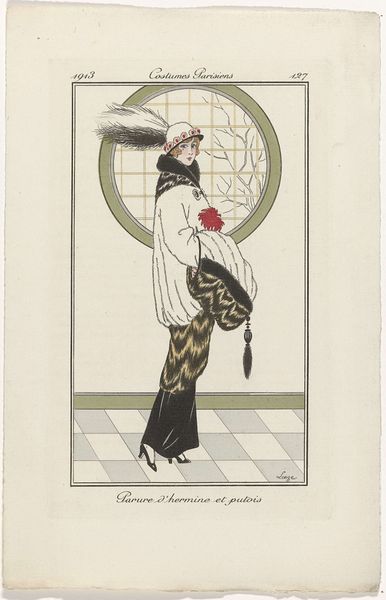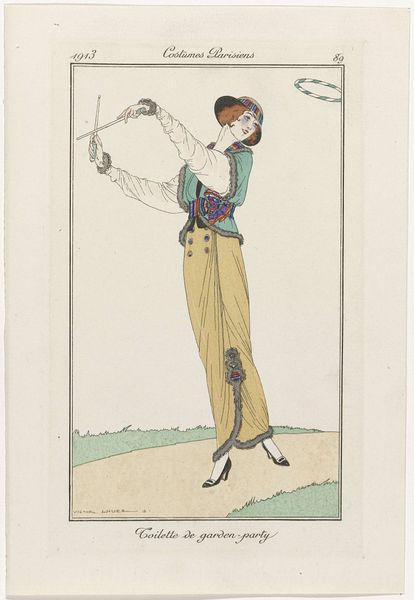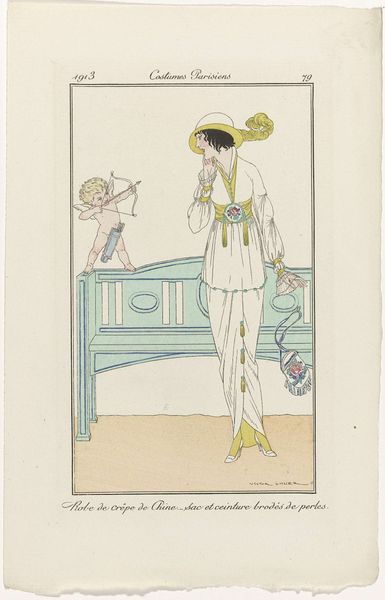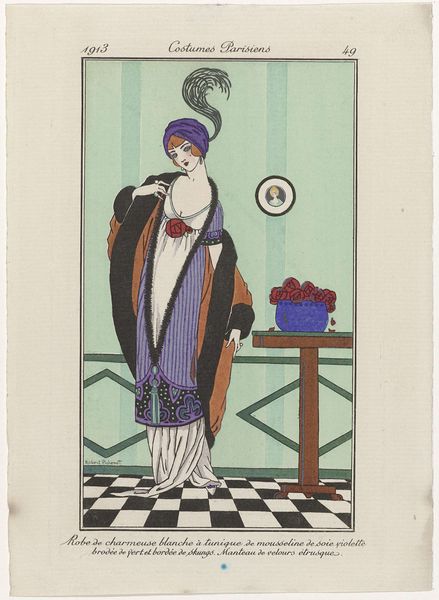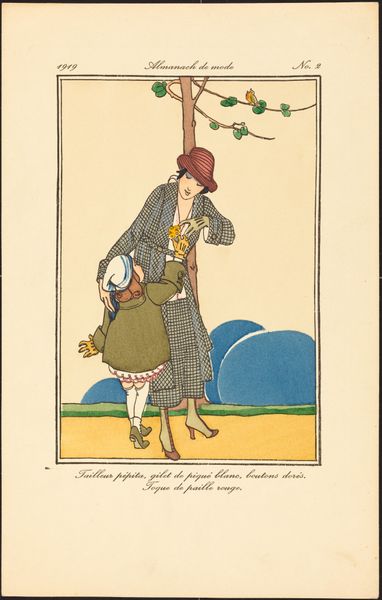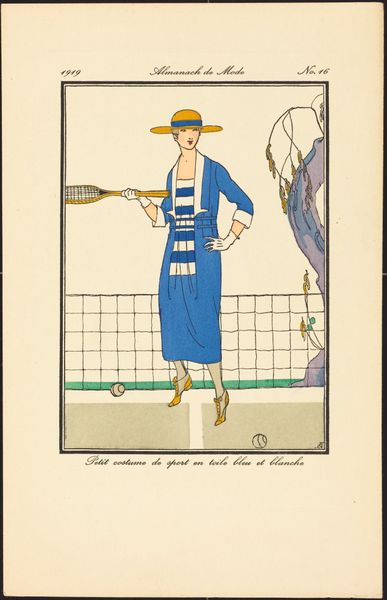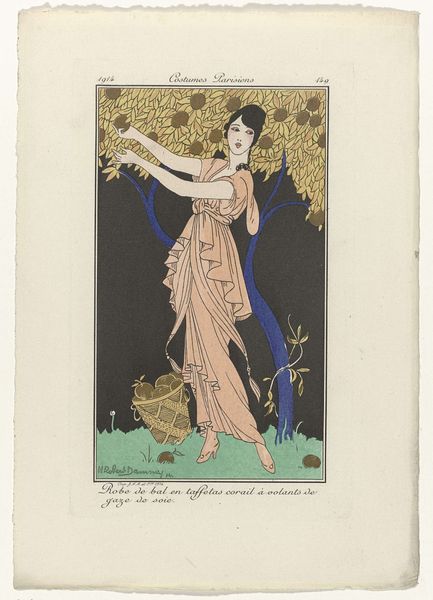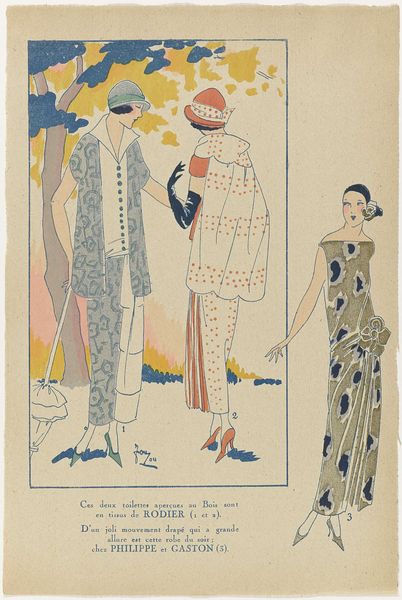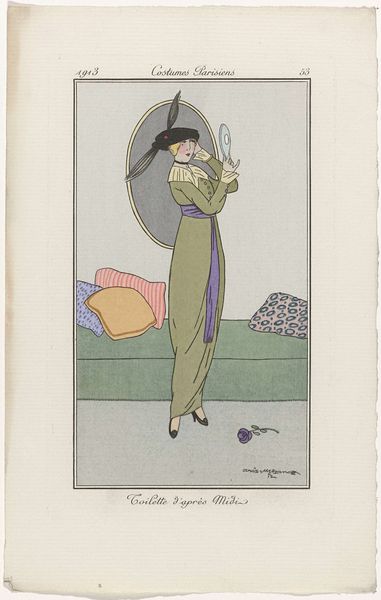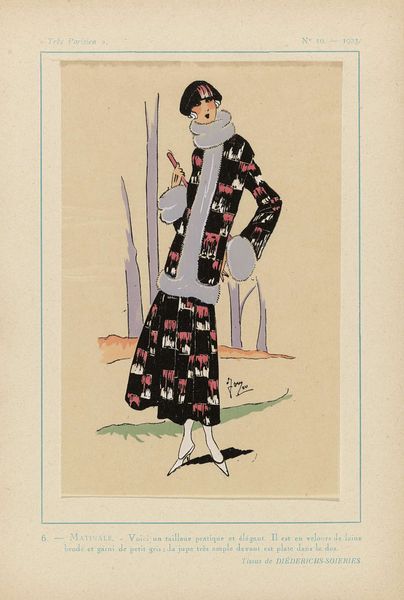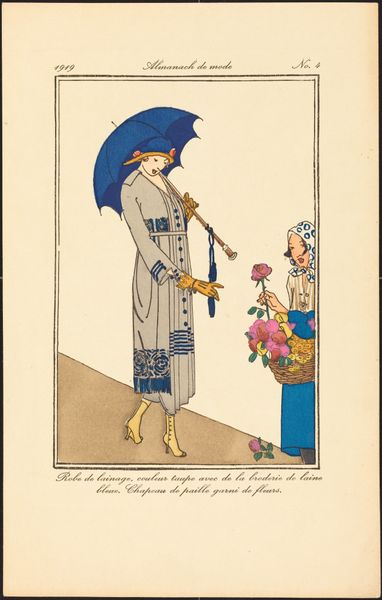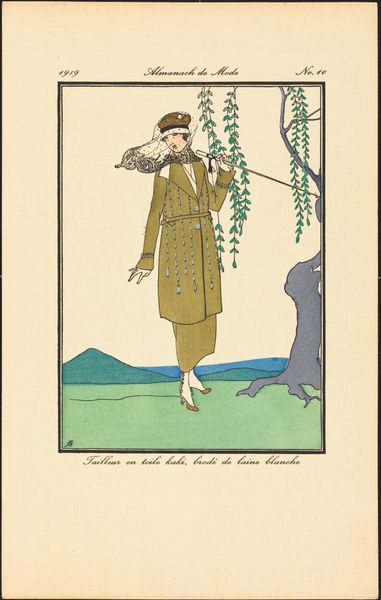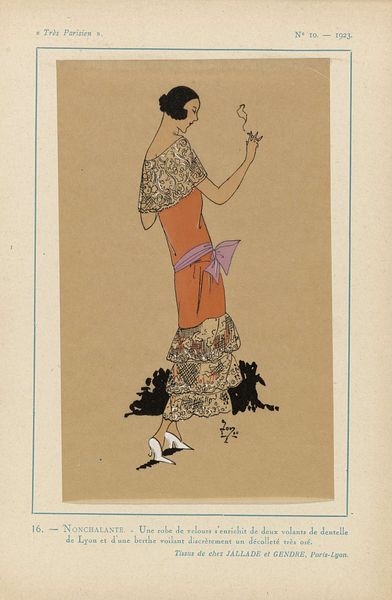![['Journal des Dames et des Modes: the Fashion Illustrators', 'Journal des Dames et des Modes: Fashion News'] by Jan van Brock](/_next/image?url=https%3A%2F%2Fd2w8kbdekdi1gv.cloudfront.net%2FeyJidWNrZXQiOiAiYXJ0ZXJhLWltYWdlcy1idWNrZXQiLCAia2V5IjogImFydHdvcmtzLzEwYWFhN2I1LWY1NmItNGM4NC1hMzA2LTllNDBmOGZkZTQ2Zi8xMGFhYTdiNS1mNTZiLTRjODQtYTMwNi05ZTQwZjhmZGU0NmZfZnVsbC5qcGciLCAiZWRpdHMiOiB7InJlc2l6ZSI6IHsid2lkdGgiOiAxOTIwLCAiaGVpZ2h0IjogMTkyMCwgImZpdCI6ICJpbnNpZGUifX19&w=3840&q=75)
['Journal des Dames et des Modes: the Fashion Illustrators', 'Journal des Dames et des Modes: Fashion News'] 1913
0:00
0:00
graphic-art, print
#
graphic-art
#
art-nouveau
# print
#
figuration
#
genre-painting
Dimensions: height 175 mm, width 106 mm
Copyright: Rijks Museum: Open Domain
This fashion plate, made in 1913 for the Journal des Dames et des Modes, is all about line, color, and a playful process. I see this stylish lady, and I’m immediately drawn to the way the artist, Jan van Brock, uses flat planes of color, neatly contained by tight linework. I love how the blocks of color, like the orange of the jacket and the green of the lawn, butt up against each other, creating this cool, slightly disjointed effect. It's not about realism, it's about inventing a world where color and line have equal say. The repetition of stripes in the skirt and background, and the quirky way the figure is positioned, gives the whole composition a kind of joyful rhythm. It’s decorative, sure, but also subtly radical. This kind of image reminds me of someone like Erté, who also embraced the decorative possibilities of fashion illustration. Both artists, in their own way, remind us that art isn't always about depth and illusion, sometimes it's about the pure joy of surface and pattern.
Comments
rijksmuseum about 2 years ago
⋮
['The Journal des Dames was inspired by the eponymous fashion magazine from the previous century and, like the earlier publication, referred to its illustrations as Costumes Parisiens. These Costumes Parisiens (184 illustrations in total) were drawn in a new, flat, decorative manner by George Barbier, Jan van Brock, Victor Lhuer and other Parisian artists, each with a signature style. Every issue came with two or three separate plates. These showed a wide variety of fashionable apparel, from elegant evening attire to outdoor outfits. A brief caption provides the name of the garment and the material from which it was made, but never the name of a fashion house.', 'The Journal de Dames et des Modes was marketed towards the affluent, sophisticated elite. The text consisted of literary contributions and articles on various topics written by leading Parisian literati. The fashion commentaries discussed the full spectrum of new trends, such as ‘strolling bareheaded by motorcar,’ matching the colour of one’s dress to that of one’s automobile, the impracticality of small umbrellas, the wearing of sky-blue and grass-green wigs, and the vogue among women for large flat hats or for the small toques adorned with feathers that projected from their foreheads like antennae.']
Join the conversation
Join millions of artists and users on Artera today and experience the ultimate creative platform.
